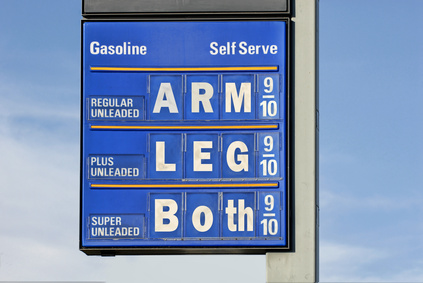
With a long weekend to prepare this rant, I’m taking a bit of a house cleaning approach and it’s fitting because this week I’m talking about residential energy efficiency programs. Residential programs are certainly not something Michaels plans to get into but we do occasionally get involved with some residential program evaluation.
If you know anything about residential programs you’ve heard of Opower. Their flagship product is the home energy report, which includes mailed reports to virtually all residential customers. The report compares participants to neighbors and against themselves last year or the month before. The mailers include energy saving tips. Savings are 1-3%, depending on who you ask. This is down in the grass but adding it up results in 3 terawatt-hours of energy, not to be confused with 3 billion kWh, per Opower.
These kinds of savings need to be evaluated with BIG data, and like many things with energy efficiency, like it or not, this is more difficult than it would seem. Incidentally, this provides a conundrum of knowing too much. If you know too much, things are difficult and many times clients don’t want to hear that because difficult is complicated, and more importantly they don’t want to pay for it – that is, pay for the right answer.
I’ve spoken with evaluators, read their papers, and also spoken with utility DSM managers. It seems Opower’s MO has the DNA of huge performance contracting firms, e.g., Johnson Controls. The wing tips sell to upper management and it rolls downhill from there. Second, we (Opower) do the energy savings calculations and we are right – just like performance contracting. But here is the difficult part. In order to isolate the effects of Opower, one has to tweeze out the effects of other programs that are influencing customer activity and buying decisions at the same time – all the other programs. My sources tell me Opower doesn’t bother with these effects. You have to ask the hard questions.
I have to hand it to Opower – they must have an awesome message to sell something that tiny and that duplicative. But let me blow this to bits with an even easier and far more effective approach to consumer (home owner) behavior change: Pre-paid energy. Pre-paying electric bills has been shown to reduce energy consumption by 10-14% – that is 10x Opower savings! What is going on here?
According to this study, pre-paying energy bills comes in second only to ground source heat pumps, which cost $10,000. Here is another one claiming 5-15% savings. And yet another one from one of the world’s greatest universities, Stanford:
I do not know the psychology behind this but I do know that I like information and control. I recently installed a Nest thermostat and I’ll do an evaluation on that at some point. It does provide a lot of cool information and of course, control.
I can say this; people watch gasoline prices like a hawk. For instance, every time I visit my mom I get the gasoline price survey along with the local cancer, death, and divorce report. They know what a gallon is. They take a gallon or half gallon of milk out of the fridge for their raisin bran. Do consumers know what a kWh costs? Do they know what a kWh is? I doubt it. Do they know the current price of a gallon of 87 octane gasoline with 10% ethanol? I’ll bet so within 2% of the right answer and this changes frequently. Electricity prices are comparatively constant.
The best way to explain kW and kWh in plain-Jane speak to me is: odometer = kWh. Speedometer = kW. What we have on homes is odometers that home-owners never look at, because they don’t move (change), and because they don’t know what the numbers mean anyway.
Here is my suggestion: Prepay and install a Wi-Fi monitor with instantaneous readouts of what the monthly energy bill would be if things were operating at the current state for the entire month. In addition, I would include days to empty. Now you have dollars right in peoples’ faces like gasoline prices, and they can see that running the electric clothes dryer would cost them a car payment for a Mercedes sedan. This doesn’t even require smart grid technology, which paranoids are scared of. People can keep cooking, air conditioning, and refrigerating their food in their own private world while saving gobs of energy.
Why isn’t everyone doing this? Would it save too much? Would it hammer utility earnings too much? Would it put our industry out of business?
I’ve said it before and here goes again: residential programs treat consumers like animals. Buy this rather than that and get a pat on the head, or a biscuit. Consumers get no rational decision-making information that can be understood. I read the label on the LED light bulb. “Saves $400,000 over the life of the bulb.” Sure. Whatever. I just want something that lights up outdoors when it’s below 0F. I won’t notice the $400,000.
Why not educate consumers with real information on what it costs to run practically every device in their home? It’s like large C&I; go after the big stuff and get to the bottom line.





